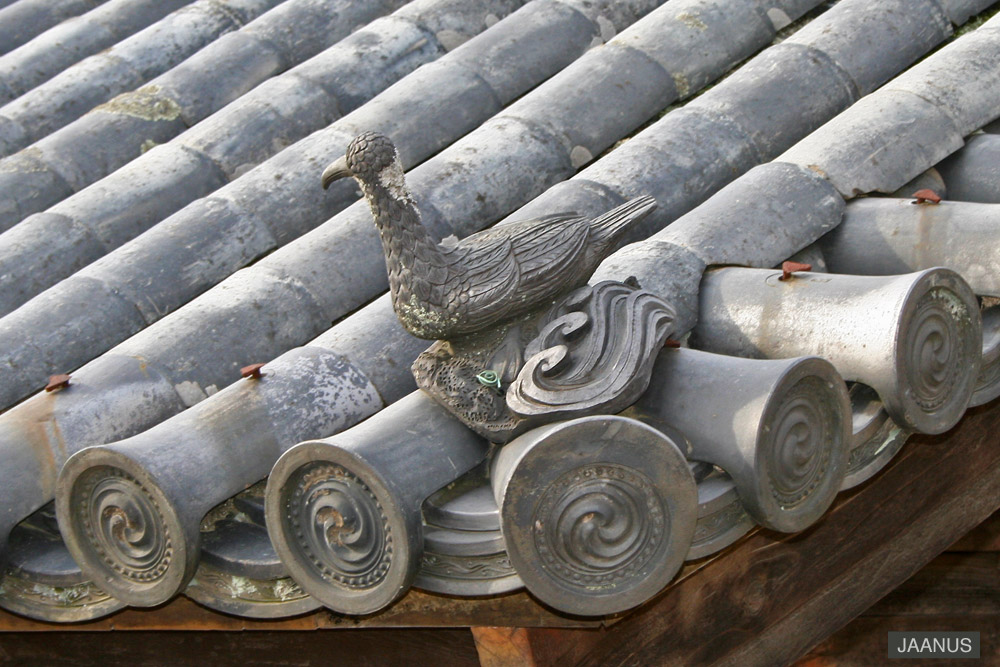| Also
called tomebuta ¯W; amabutagawara JW¢; sumibutagawara
÷W¢. A cover tile, usually hemispherical but sometimes square, used to prevent
roof leaks where three tiles come together near the end of the corner of
a roof. The three tiles are: 1) hanging
tiles *kakegawara |¢, i.e., those which are laid at right angles to
the bargeboard *hafu
j and protrude beyond its edge. 2) the
corner tile or hip tile *sumidomoe
÷b at the end of a corner ridge *sumikudarimune
÷~. 3) the convex semi-circular eave-end
tile *nokimarugawara
¬Û¢ with pendant *gatou
¢ attached. The sleeve tiles *tonemarugawara
ªÛ¢ or *sodemarugawara
³Û¢ border the hanging tiles. Because the tile's sides are of differing
lengths, adjustments to their height at the inner ends must be made. This
is accomplished by chipping off where necessary in order to fit the three
tiles at the corner end against the sleeve tiles. Without a cover tile,
rainwater would easily seep through the places where the tiles meet. These
are usually made as a set today. Although plain, undecorated tomebuta
can also be seen, most have an added three dimensional sculpture decorating
the top. These sculptures exhibit an enormous diversity of very imaginative
molded clay images. They include birds, turtles, lions and other animals,
peonies, chrysanthemums and other flowers, human figures, for example, a
little man carrying money bags, and standing waves. Many of these tiles
were hand molded. In recent centuries, molds have come into use with liquid
clay poured into them. |



